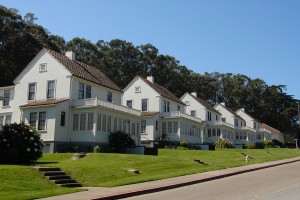Maryland BRAC
Years Later, Maryland BRAC Continues to Benefit Military Housing and Other Businesses
Even after its official end in 2011, the positive effects of the fifth round of Base Realignment and Closure (BRAC) can still be felt throughout the state of Maryland and its surrounding areas.
In 2005, the Pentagon proposed a list of base closures that included, among others,Fort Monmouth in New Jersey.
With the closing of that base, operations had to be shifted to other locations throughout the country and, with those operations, there needed to be personnel who could carry them out.
Given that installations like Aberdeen Proving Ground, Andrews Air Force Base, and Fort Meade call Maryland home, it makes sense that the MD/DC/VA area would see some of the economic benefits that occur as a result of BRAC.
What many people didn’t see coming, however, is how long-lasting that success would be following the fifth round’s proposal in 2005 and its end in 2011.
The Relocation of Federal Contractors and Military Personnel
With the shift in research and other defense-related responsibilities from New Jersey to different military sites across Maryland, bases like Aberdeen Proving Ground and Fort Meade have seen a large influx of personnel who can do the jobs required.
This includes private sector workers from various defense contractors who have established a presence in the area, as well as reassigned military personnel.
While both groups of people bring positive economic impact to the area, it’s worth noting that the latter group in particular brings certain positive economic implications with their arrival.
With a larger influx of military personnel moving into the area, businesses benefiting from BRAC in Maryland not only included retailers and restaurants, but the area’s housing market as well.
Thanks to services like VA Mortgage, a division of First Mariner Bank that helps veterans get low-interest rate lending for active military as well as veterans,Maryland military housing is among the many different industries to have prospered in the wake of new arrivals to the state.
The growth in jobs and other indicators of a strong economy slowed, like everything else, in early 2007 during the onset of the economic crisis, but the growth picked up as the economy slowly improved in the following years.
And there’s a chance that it may continue to increase from there.
Where Things Go from Here
The fifth round of BRAC in Maryland is already considered to be the biggest economic growth in the state since World War II, with the affected military installations becoming central to the state’s economy.
The high-paying, high-profile jobs that have been brought to the area as a result of BRAC have also seen a need for possible expansion of the square footage covered by bases like Aberdeen Proving Ground.
As more contractors and military personnel flowed into the base following the closure of Fort Monmouth, there was a need for office space to support those personnel, which led to local developers addressing those real estate needs in order to meet that demand.
As stated earlier, this phase of BRAC in Maryland ended over a year ago, but the positive stimulation to the local economy is something that was felt through and continues to be felt to this day.
Knowing how long this boom lasted, it will be interesting to see how things develop in 2015 when there is another round of BRAC set to take place.
While it is far too early to tell whether or not the coming round will affect Maryland and surrounding areas the way the last one did, it wouldn’t be out of the realm of possibility.
Everyone from local retailers, to the housing industry that lends to veterans could see another prosperous history in the near future if the next round of BRAC hits Maryland.
